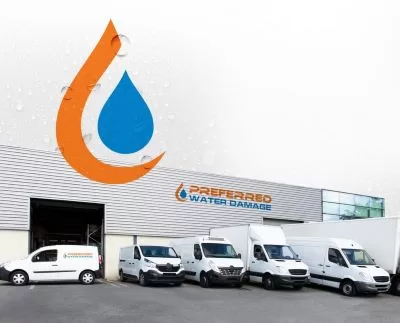What to Do Immediately After an Emergency Water Damage Incident
Facing a water damage emergency can be overwhelming, but with the right information and resource, you can start the restoration process quickly and safely. In this article, we’ll provide an overview of how to handle such an emergency, including tips on water cleanup, mold removal, and more.
Stop the Source of Water Damage.
It’s important to take action as quickly as possible when it comes to a water damage emergency. The first step is to find the source of the water and shut it off immediately if possible. This could involve adjusting a privacy valve or turning off the main water line. This will help reduce subsequent damage, repair costs, and potential safety issues.
Call an Emergency Restoration Company Immediately.
After the source of the water is shut off, the next step is to call an emergency restoration company. Trying to extract excess water, drying out the affected area, and returning home back to its normal condition requires professional care. Restoration technicians have specialized training in dealing with water damage emergencies, which will help ensure that no further damage occurs during clean-up and the restoration process.
Carefully Document the Damage to Your Property.
Immediately after an emergency water damage incident, it is important to document the damage for insurance purposes. Take photos and videos of all flooded areas, as well as any damaged belongings. It is also important to write down detailed notes about what has been damaged and which items were affected. Making a list of all affected items and the degree of damage can be helpful in making sure you receive full compensation from your insurance provider.
Remove wet contents from the area & salvage what you can.
After documenting the damage and the affected items, immediately begin to remove wet items from the area. Any items which can be salvaged should be put in a safe, dry place. If possible, furniture should be placed barren so that all water can drain out of it, this includes wall-to-wall carpets. Do not attempt to salvage wet electronics, these can often still pose a safety hazard even if they appear undamaged. All food items, medicines, and other perishables will need to be thrown out if they have been affected by water.
Use Proper Equipment to Speed Up the Drying Process & Prevent Mold Growth.
After you’ve removed standing water and damaged items, use proper quality equipment to begin the drying process. Dehumidifiers help regulate humidity levels and ventilation fans can be used to dry out wet carpeting and furniture. A thermal imaging camera can be used to detect moisture in walls, ceilings, and other hard-to-reach areas, meaning any potential mold growth will be caught before it becomes a problem. Additionally, dampness meters and probes can help find moisture where it isn’t visible so that it doesn’t cause deeper problems down the line.
What to Expect
When you’re dealing with emergency water damage, it’s important to get expert assistance as soon as possible. Our specialists are experienced in handling these kinds of situations and will ask you several questions to assess the extent of the damage and determine the best course of action for repair.
Our Preferred Water Damage Specialist will ask several questions:
- Your name and contact information
- Your insurance information (if applicable)
- The physical address of the water-damaged residence or business
- When did the flooding or water damage occur?
- What caused the water damage (if known)?
- Is there electricity available (on-site)?
Our customer care specialist will thoroughly assess the situation and all details provided before dispatching a team to respond and ensure necessary repairs are done quickly and correctly.

